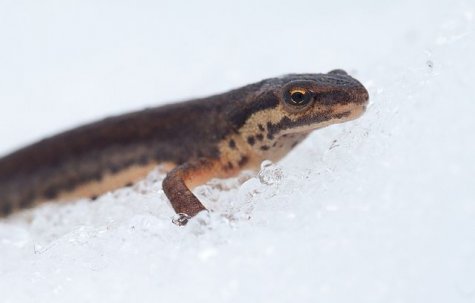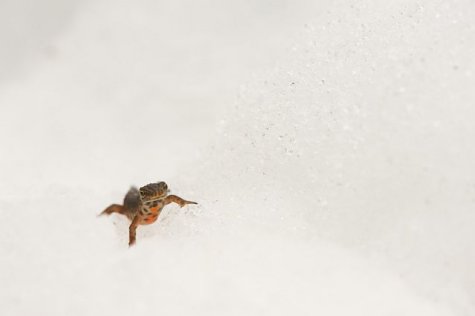Spring is here for newts
Photo: Peeter Teedla (18.03.2012, Läänemaa)
Smooth newt; Common newt Tähnikvesilik
The heat wave of March set the more alert newts moving. The April sun will bring all the tailed amphibians (Caudata) out from their wintering spots and the migration journey to the spawning waters begins. Shallow ponds, lakes, creeks or ditches with warm waters are preferred. The first half of summer is spent in water. Winter was spent together in groups: in leaf heaps, decaying tree stumps, even in mole tunnels ... and on occasion in a cellar too.
Problems about whether we have to do with a common lizard (Zootoca vivipara) wakened by the beautiful spring weather or a newt seldom arise – newts have no scales on the body and no claws
The length of smooth newts can reach ten centimetres. The female's exterior is modest – brown or olive-coloured back, the spots on the stomach less coloured than those of the males. The latter already turned quite colourful at the end of the hibernation and the showy multicoloured crest is developing (see photo below). In the spawning period they are in full splendour; mating begins as the water temperature approaches ten degrees. Newts become sexually mature in their second or third year. During the aqueous period they feed on the larvae of mosquitoes, dragonflies and other water creatures, on molluscs, frog spawn and – if there are fish in the water – fish roe. In turn herons and storks arriving from the migration journey prey on the newts.
Photo by Aimar Säärits (March 30th, near Kakerdi bog)
Translation: Liis










